Paris often reveals itself in the details. And as a historian of design and technology, I am drawn to the many different ways that the French seem to find for doing the same thing. In this case, protecting the sides of the wide double doorways or archways known as portes cochères from the damage by the wheels and sides of carriages or carts — now cars and trucks — going through them. Like the spikes of the anti-burglar devices I looked at in an earlier blog, they say: keep your distance. I photographed many of these devices before I even knew their name.
Let us begin our tour with a rather imposing and clearly important entryway. On either side, note the humble-looking guard stones. That is the English term, but when I took the picture, I didn’t know either the English or the French term. I enlisted the help of Adam, author of the wonderful and informative blog Invisible Paris, who has a gift for research, and he came up with the name chasse-roue (to chase the wheel) or bouteroue (to push the wheel out of the way).
For contrast, consider this image. Although it is made of cast iron and sited in humbler circumstances, it does the same job as the chasse-roue at the porte cochère of a diplomatic residence.
Before the age of cheap iron and steel, chasse-roues were traditionally made of stone. In the Passage St. Paul in the 4th the beautiful sequence of chasse-roues reads like horizontal archaeology.
Once I knew the correct name, I searched online for more images, and found a wonderful site dedicated to the heritage of the Somme region. Even if you don’t read French, click here to see a whole range of stone versions in the region to the north of Paris.
Chasse-roues are warning signs: keep back, keep your distance, don’t brush up against me. Most of the surviving chasse-roues that I have seen in Paris are from the age of economical iron or steel. And of all the cast iron chasse-roues I have seen in Paris, none give a more workmanlike message that those where the buses pound through the archways to cross the interior courtyard of the Louvre.
As with so much of the material world, we don’t know who made what we see. I have only found one chasse-roue in Paris with a name attached. Unfortunately, I don’t know who B. Dubuc was, but I assume he was the owner of the Paris iron foundry where this conical cast-iron chasse-roue was cast.
One of the beauties of cast iron — a material that I am very fond of — is that while molten, it may be poured or cast to take many forms. Once someone has made a pattern or mould of the design (the most expensive part of the process), each casting is relatively cheap. That is why we have so many inexpensive ornamental cast-iron products from the latter 19th and early 20th centuries. And because cast iron is so fluid, it can be made into elaborate shapes. Here are only a few of the many ornamental cast iron chasse-roues I have photographed in Paris.
Some of the cast-iron chasse-roues project a sense of strength and solidity. This one seems to say, “I might not be pretty, but I have a job to do and I do it well.”
Others seem to combine the image of strength with a sense of elegance. This is a beautiful but substantial casting.
Here we find a similar design executed with greater attention to detail and less encrusted in detail-obscuring paint.
Some are quite elaborate but without sacrificing the strength needed to do the job. With the holes or voids in the design, this casting would have required greater time in making the pattern or mould and greater care in cleaning the casting than for others we have seen. Nonetheless, it was still a process that allowed for production at a reasonable price.
In chasse-roues, as in gargoyles, one finds works depicting mythological or creatures from nature. And often there is a certain sly impudence. Am I imaging things or is this a cat (or lion) with attitude?
Sometimes chasse-roues work in conjunction with other protective devices as with this corner-mounted protector.
Whatever shape they come in, whatever they are made of, chasse-roues all do a similar job. The variety is part of the human technological experience and what I have seen in Paris helps reinforce my view that nothing we do is purely functional. And for that I am truly grateful.
Next time you wander about Paris, look for the chasse-roues. You will be surprised by their number and variety. Perhaps you will find my friend, which I call the “Buddha of the Marais.”
Text and photographs by Norman Ball



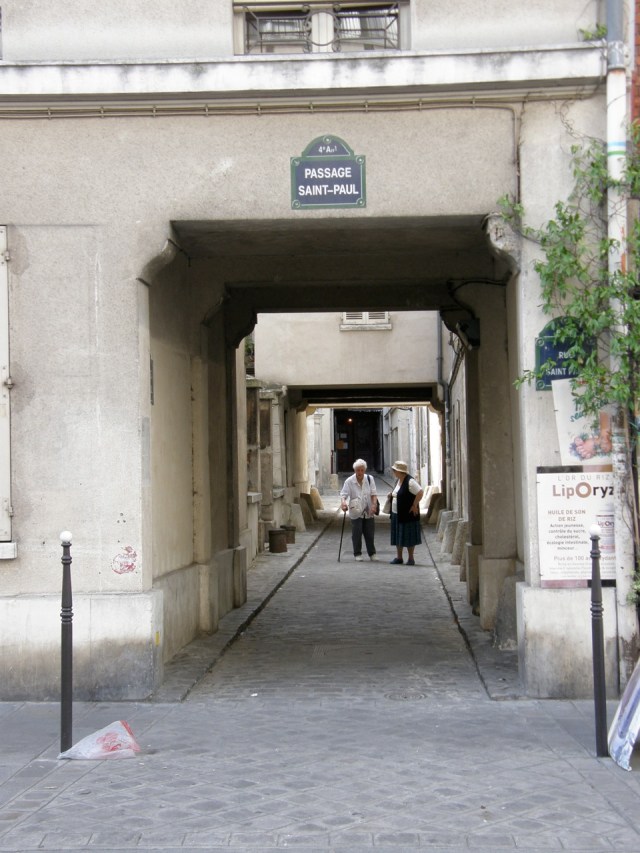
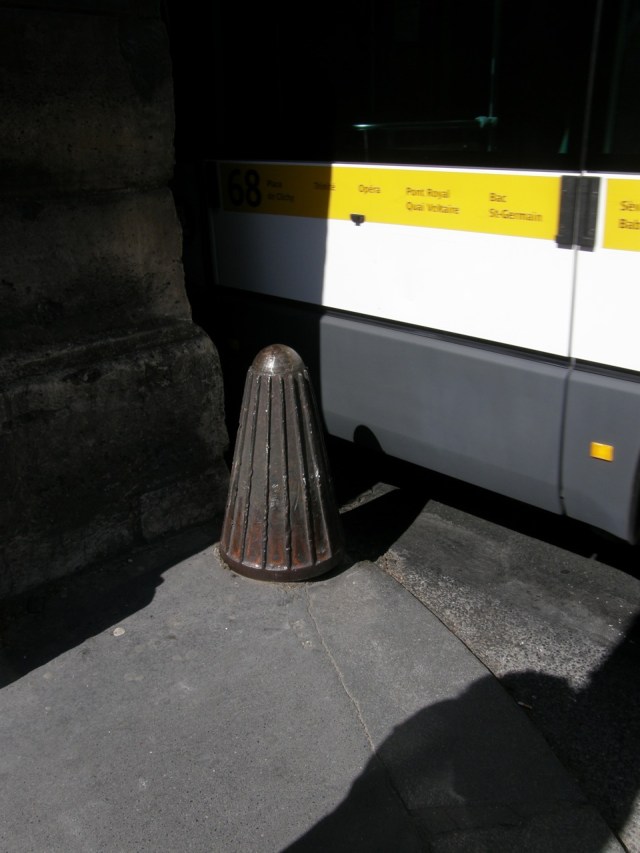


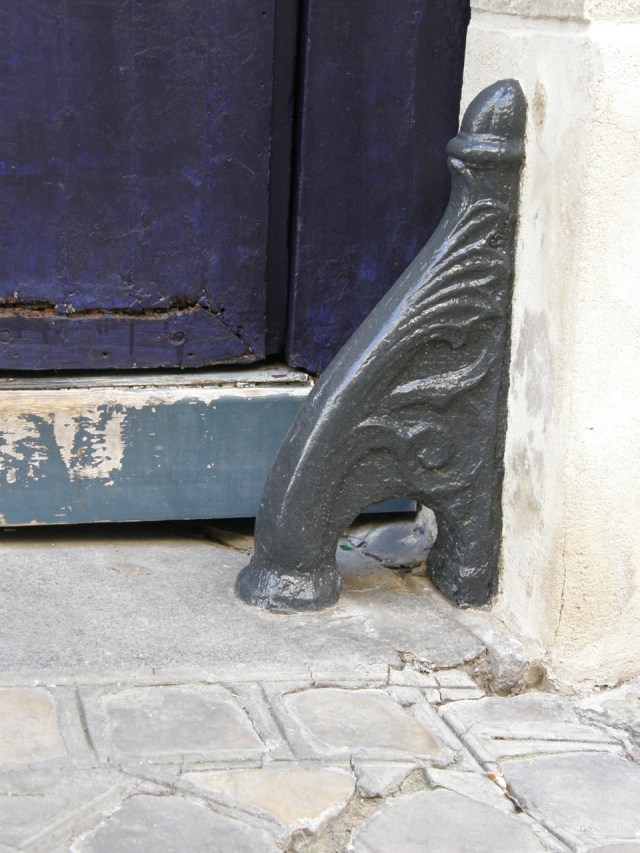


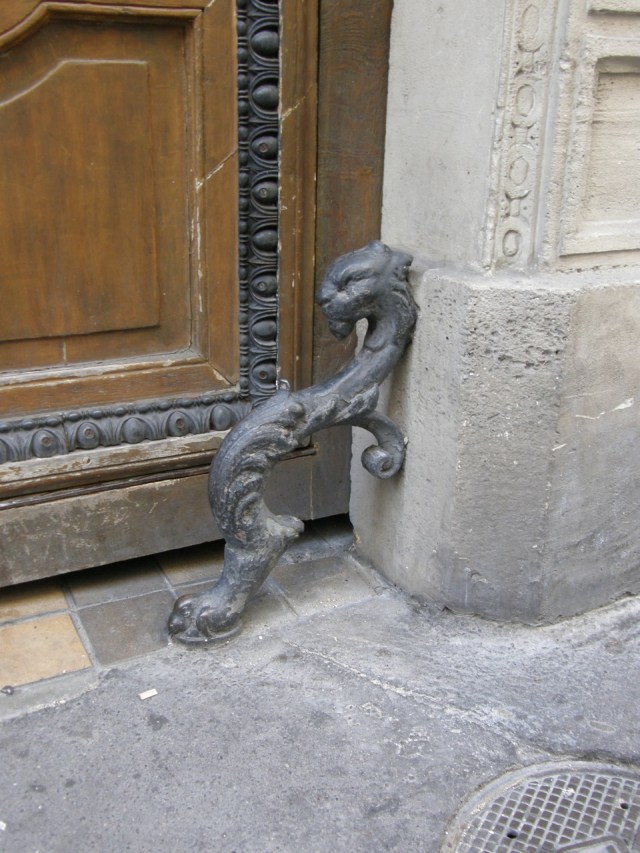








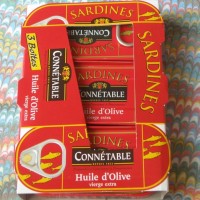

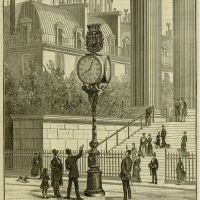
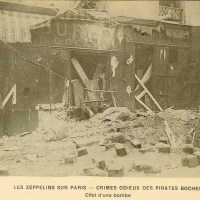










well NOW I know where I got to learn about you – it’s Adam’s Invisible Paris site – only I didn’t follow it up
interestingly, I only saw those chasse roue thingies consciously in the Pyrenées where they sat in a short distance from each other like guards – and they probably were to guard the house from overflowing ‘traffic’ as well as maybe stopping actual heavy rainfalls in some way. We stood there for a long while and wondered why and when they were placed there. The bottom of the beautiful wooden door of this very old house was partially ‘eaten’ away from the heavy floodings they must have at times…. Hard to believe when one thinks how hot it can be in the Pyrenées but we were told that yes, it can rain very hard and long once it starts!
I also took many pictures of those ‘barriers’ in Paris and I always feel slightly incommodated because I think I would probably fall over them every other time I’d leave the property… Maybe I wasn’t meant to live in such a precious home!
Thank you so much for this interesting article. Highly appreciated.
Pingback: Walking on cast iron in Paris | Parisian Fields
Pingback: Reminders of Paris in Greenwich and London | Parisian Fields
Pingback: The hidden city | Parisian Fields
Pingback: Connaissez-vous Paris? | Parisian Fields
Pingback: The art and purpose of the colonne sèche | Parisian Fields
Pingback: Architectural Technologist – Chasse-Roue or To chase the wheel
I lived a year in Paris and do not remember these things. Thank you for writing this blog. I do love how the Parisians put so much art and detail into the things we do not automatically notice.
You only have to look at many older UK cities, they are there, you just have to look, but excellent article
Although once I found your blog I went back and read all your entries, I love finding links that lead me back to re-discovering your treasures. Thank you for the great work you do!
Pingback: Chasse-roues or Guard Stones.
Pingback: Rescued from oblivion | Parisian Fields
Pingback: Richard Ewen: A Texas Artist Whose Watercolours Capture Paris | Parisian Fields
Pingback: Get the “L” out of here | Parisian Fields
Pingback: Coming to terms with the heat in Paris | Parisian Fields
Pingback: Are you sitting down? | Parisian Fields